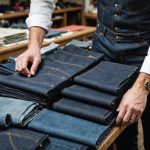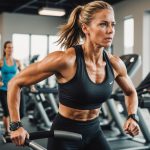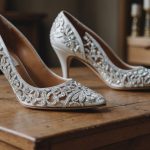Understanding Chafing in Extreme Heat
Chafing, a common skin irritation, occurs when repeated friction or rubbing damages the skin. In extreme heat, the risk amplifies due to several factors. Primarily, excessive sweating acts as a catalyst. The moisture softens and weakens the skin’s outer layer, intensifying the friction when skin moves against skin or clothing.
Several causes of chafing are specific to hot conditions. For example, heat causes blood vessels to dilate, increasing blood flow and making the skin more sensitive and prone to friction. Clothing becomes more likely to stick, bunch or rub against the skin, and sweat lingers longer. Such conditions further exacerbate the physiological impact of heat on skin friction.
Additional reading : Get a Luminous Tan: Expert Tips for Perfect Self-Tanning Minus the Orange Tint
During activities in hot weather, the body naturally sweats more, creating a cycle that worsens chafing. Therefore, understanding these elements is crucial for those regularly engaging in outdoor activities or working in hot environments. Recognising how heat effects contribute to chafing helps individuals take proactive steps to prevent it before it becomes a painful problem. As such, identifying clothing and materials that minimize skin contact is essential.
Expert Strategies for Preventing Chafing
While chafing can be frustrating, several expert strategies can help prevent it, particularly in hot conditions. Central to these strategies is effective moisture management. Keeping the skin dry reduces the friction responsible for chafing. Experts recommend using creams, powders, and balms specifically designed for moisture control. These products create a protective barrier, reducing skin rubbing and irritation.
Additional reading : Transform Your Scalp: Top Essential Oil Methods for an Indulgent Massage Experience
Selecting the right clothing plays an equally crucial role in chafing prevention. Opt for moisture-wicking materials that draw sweat away from the skin, keeping it dry. Additionally, wearing well-fitted, seamless clothing can prevent excessive friction. Avoid fabrics that are too rough or do not allow the skin to breathe.
Lastly, maintaining a skin care routine that includes regular cleansing and moisturizing helps keep the skin resilient against chafing risks. Frequent application of hydrating products ensures that the skin stays strong and less susceptible to damage. By incorporating these proactive measures, individuals can significantly reduce the incidence of chafing and enjoy their activities in various extreme heat conditions without discomfort.
Best Practices During Outdoor Activities
Engaging in outdoor activities during hot weather requires strategic planning to minimize chafing. Timing is crucial; aim to exercise during cooler parts of the day, such as early morning or late afternoon, to reduce heat exposure. This simple adjustment can significantly lower the risk of skin irritation.
Hydration plays a pivotal role in maintaining skin health. Drinking plenty of water helps regulate body temperature and keeps the skin less prone to friction damage. When your body is well-hydrated, the skin retains its elasticity, offering better protection against the rigours of physical activities.
Incorporating proper stretching routines and adjusting gear is essential to comfort. Muscle flexibility reduces the likelihood of severe friction, while correctly fitted equipment ensures minimal rubbing. Reassessing your gear and making small tweaks can prevent discomfort and promote better movement.
For those engaging in strenuous exercise, these practices can mitigate heat-related skin issues. By focusing on timing, maintaining adequate hydration, and ensuring gear is well-suited, enjoyment of outdoor activities can come without the familiar sting of chafing. Such measures not only protect but enhance the overall experience.
Personal Experiences and Anecdotes
Hearing real-life stories can shed light on diverse personal experiences with chafing, especially in extreme heat. Take, for example, the tale of an experienced marathon runner. Despite rigorous training, she faced severe chafing during a race in humid conditions. Her struggle highlighted the importance of moisture management and using anti-chafing products like balms. After switching to breathable, moisture-wicking outfits and strategically applying cream, she significantly reduced chafing in subsequent races.
Many individuals have found success through trial and error. A frequent hiker shared his insights on how altering his clothing made a significant difference. Initially, he encountered persistent chafing due to improper gear. However, by opting for seamless garments and lightweight apparel, he minimized friction and enjoyed his hikes more.
While some solutions may work universally, others might depend on unique personal factors and environmental challenges. Such testimonies emphasize the value of learning from others’ experiences. Discovering effective strategies tailored to one’s activities and conditions plays a critical role in chafing prevention and enhancing comfort. These anecdotes encourage experimenting with various approaches until the best personal solution is found.
Recommended Products and Gear
Exploring the right chafing products and anti-chafing gear can make a significant difference in your comfort during activities in extreme heat. When it comes to preventing chafing, not all materials and products perform equally. Consider selecting items that offer both efficacy and comfort.
Top Anti-Chafing Creams and Balms
Among the best solutions are specially formulated creams and balms. Look for products that create a protective barrier on the skin, reducing friction from clothing and other surfaces. Products containing ingredients such as shea butter or aloe vera are often praised for their soothing properties.
Best Moisture-Wicking Clothing
For daily wear, opt for moisture-wicking clothing that efficiently moves sweat away from the skin. This keeps you dry, reducing the conditions that lead to chafing. Look for high-quality brands that offer lightweight, breathable fabrics designed for activity in high temperatures.
Essential Accessories for Comfort
Invest in accessories like supportive undergarments or breathable socks that are engineered to minimize contact and friction. Such items can prevent discomfort, making physical activities more enjoyable. Remember, choosing products that suit your specific needs can dramatically improve your experience in extreme heat.
Post-Activity Skin Care
After engaging in any physical activity, particularly in extreme heat, focusing on post-activity skin care is crucial for recovery and reducing chafing effects. An effective cleansing routine helps remove sweat and debris from the skin surface. Use a gentle, hypoallergenic soap to avoid further irritation or stripping natural oils.
Ensuring proper moisturization after cleansing can repair the protective barrier of your skin. Opt for lotions containing soothing ingredients like aloe vera or shea butter, which calm inflammation and provide necessary hydration. This rehydrates the skin and assists in its healing process, reducing the risk of future chafing.
If you encounter areas of inflammation or discomfort, swift action is key. Applying cold compresses can alleviate swelling and provide immediate relief. For ongoing discomfort, consider topical anti-inflammatory creams that reduce redness and sooth irritation.
Post-activity recovery is about addressing the immediate effects and planning for future prevention. Adapting a regular skin care routine that respects your skin’s needs, especially after activity, is essential. With these practices, not only is discomfort reduced but overall skin health is improved, leaving you ready for the next challenge.
Additional Resources and References
Navigating the world of chafing solutions can be overwhelming, but several expert articles offer in-depth insights into effective chafing prevention. These resources serve as guidance for understanding skin care dynamics and engaging in outdoor activities safely. Such articles delve into topics like strategic timing for outdoor exercises and the importance of moisture management in maintaining skin health.
Exploring product reviews and comparisons provides valuable perspectives on choosing the best chafing products. Detailed analyses explain the effectiveness of different creams, powders, and balms. Understand what works best for specific conditions by assessing real-world applications. These reviews can be instrumental in making informed decisions about skincare purchases.
Various organizations for outdoor enthusiasts and athletes furnish additional support through community forums and advice. They offer tailored exercise strategies and preventative measures for heat exposure. Engaging with these communities can uncover personal anecdotes, allowing one to learn from collective experiences.
Staying informed through continuous learning not only aids in current challenges but enhances long-term skin care management. By utilising these curated sources, individuals can effectively tackle and prevent chafing in any extreme heat scenario.











